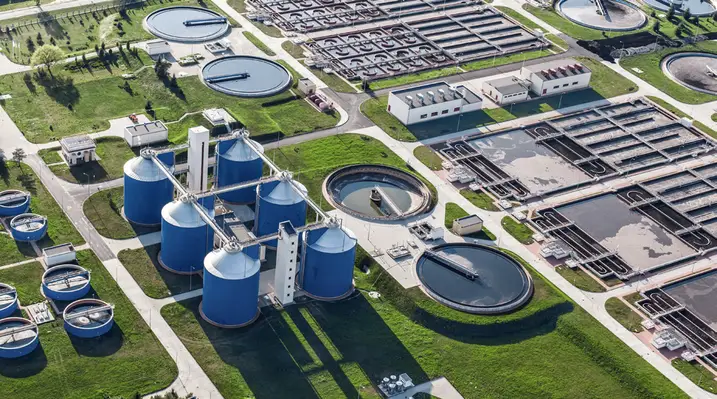A water pipe can be defined as any pipe that is used to transport water. The applications of piping systems are very vast from the power industry to the process industry, utility services, and so on. Piping is used for transporting different states of material like liquids, gases, slurries, etc. Depending on the function of served water, there are three types of water pipes that are widely familiar:
- Water piping is used for transporting treated drinking water to consumers.
- Water piping systems used for firefighting operations and
- Water pipes are used as sewer piping systems which is a wastewater treatment process.
The materials and conditions of these three systems are entirely different as per their respective conditions. Water piping networks, used for transporting drinking water consist of large-diameter main header pipes, which connect entire towns and smaller supply lines that supply a street or group of buildings from the header pipes. With a size range generally between 3.65 m. giant mains or header lines to small 12 mm pipes used for individual outlets in the buildings. Consuming water can be transported through gravity and the quality of water can be preserved using these piping systems.
Materials for Water Piping
Water Pipes come in several types and sizes as per their applications which include 3 main categories of materials such as metallic, cement, and plastic pipes. Metallic pipes include galvanized iron pipes, steel pipes, and cast-iron pipes. On the other hand, PVC and HDPE pipes are the main categories of plastic pipes used in water piping systems.
Steel pipes
Comparatively, they are expensive but they make the strongest and most durable for all water supply pipes. They can withstand high water pressure. They have longer lengths than most of the other pipes and thus reduce installation and transportation costs. They can also be welded easily.
Galvanized steel or iron pipes
It is the common piping material for the conveyance of water and wastewater. It’s still used throughout the world but its popularity is getting declined. Whenever the water flow is slow or static for periods, it causes rest from internal corrosion and also gives an unpalatable taste and smell to the water under corrosive conditions.
Cast iron pipes
These pipes are very stable and well applicable for high water pressure conditions. They are considerably heavy which also makes them unsuitable for inaccessible places due to transportation problems. As they are having more weight they will generally come in shorter lengths. Which increases the cost of layout and joining.
Copper
They are mainly used for the distribution of hot and cold water. Works in both underground and above-ground applications, but to use underground they require a protective sleeve as copper can be affected by some soils. Highly expensive comparing other piping materials.
Concrete cement and asbestos cement pipes
They are expensive but non-corrosive. They are extremely strong and durable. As they are bulkier and heavier the installation, handling, and transportation costs are very high.
Plasticized polyvinyl chloride (PVC) pipes
They are non-corrosive, extremely light, and thus easy to handle and transport. Even though highly flexible they are strong and come in long lengths which lowers the installation and transportation costs. But when exposed to overground they are prone to physical damage and when exposed to ultraviolet lights make it more brittle. Expansion and contraction of the PVC should be the main consideration. The material will soften and deform if it is exposed to temperatures over 65° C.
PVC piping systems, are used for many industrial applications like the transport of process cooling water, and hazardous chemicals. PVC can also meet the high demand in terms of safety, economic factors, and subsequent maintenance during industrial applications.
CPVC
Chlorinated polyvinyl chloride is often cream-colored or off-white plastic. This type of pipe can withstand temperatures up to about 180 degrees Fahrenheit or so (this depends on the schedule), so it can be used for both hot and cold-water lines.
Water Piping PEX
Cross-linked polyethylene is sometimes known as XLPEl. It has good resistance to both hot and cold temperatures, they are commonly used in hot and cold water lines for domestic service, and also for hydronic heating systems (such as radiant under-floor systems).
Cost consideration for Water Pipes
The installation costs of water pipes make up the major part of the total cost of the project. The following factors are considered.
- Weight of the pipe: a pipe that is light in weight can be handled easier and faster.
- Ease of assembling: methods of joining the piping like bolting, welding, threads, etc.
- Pipe strength: some pipes may require special bedding to withstand external pressure. While other pipes won’t. The choice can have a big impact on cost management.
Water piping networks can run above ground or can be buried below the ground. In most situations, the majority of the water pipe network is underground.
How Deep Should You Bury Water Lines?
It depends upon the geographic conditions also. Always have to consider the municipality’s building codes. Generally, Waterlines should always be kept below the frost line to ensure that they water line will not freeze.
Water Piping in Sewage network
Another application in water piping is the sewage lines which will be mostly buried on the ground horizontally. These pipes are usually of large diameters (160 mm to 650 mm) and they consist of many pipes for the long run. Most sewage lines are cast iron and they are usually heavy. They can be made of compact PVC and HDPE materials.
Cast iron pipes are highly vulnerable to condensation and acidic gases. They may show a single penetration failure due to internal stresses.
The presence of hydrogen sulfide gas is the main cause of pipe corrosion. This gas produced from sulfates is found in both raw water sources and water treatment plants. This corrosion due to the accumulated sulfates is known as crown corrosion. Sewage pipes will get affected by corrosion which reduces the lifespan of the pipe.
To avoid corrosion in sewage piping
- Inert materials can be used
- Usage of sacrificial lining
- Using acceptable linings
- Providing ventilation for removing moisture condensation
- Periodic flushing in the network.
The main European Standards followed for Water pipes in Sewage Networks are EN 1401 and EN 13476.
Water Piping in Fire protection systems
Another important application of water piping is the fire protection system which is used in industries as well as building services. Fire protection water pipes use a normal carbon steel pipe to convey fire suppression agents common water or even gas sometimes. ASTM A795 is a steel pipe for fire protection use. As per the standards, the pipe can be welded or seamless, black or galvanized. The minimum size for the fire sprinkler system is usually 1“. In general, water pipes for the firefighting network are painted red in color.
These pipe systems are lightweight so that the fabrication in the field will be easy and won’t corrode or scale up in service. C-PVC piping systems are frequently used for fire sprinkler systems installed in public spaces.
Black steel is used as the common material for traditional fire protection systems due to its strength, durability, and extreme resistance to heat exhibited. A melting point between 2600 °F and 2800 °F so that the steel pipes can withstand the heat of burning buildings and keep water flowing onto the fire. They are suitable for all fire protection systems, they can be easily formed, bent, and fabricated, enabling them to manufacture in various sizes, shapes, and configurations. It also has the lowest coefficient of thermal expansion among fire sprinkler system pipe materials. Even extended exposure to ultraviolet rays also has no impact on its mechanical properties or even performance. Painting can be done with no adverse effects.
Rigidity is a key factor during installation as it determines the distance between hangers. As more flexible materials require more hangers. It also exerts high forces on anchors.
The major drawback of the material is the corrosive issues. They are more susceptible to corrosion than any other material and even damages can begin from the installation because of the presence of water and oxygen.
The servicing becomes very costly for obstructed water pipes, repairing leaky holes, and removing loose scales or rust due to corrosion. It degrades the system flow characteristics also.









Saludos cordiales Ingeniero Adarsh ,soy de la republica de Ecuador aquí en Sudamérica soy un seguidor de todos os blogs que publican son muy interesantes gracias por compartir
Dear Sir,
If a ductile iron water pipe is supported on a concrete plinth with pipe clamp on top to secure it in position for uplift force along the pipe run. The pipe is installed in a services trench with ventilation. Do resilient strip need to place all round the pipe to isolate it from pipe clamp and concrete plinth. Or just the part in contact with pipe clamp is needed?
Hope you can give me some advices.
Many thanks.